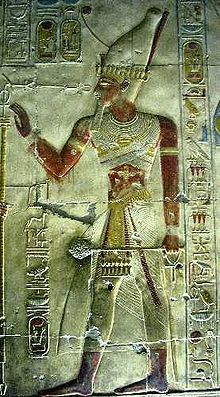I wanted to take it easy again yesterday, but I didn't want to just sit around all day either, so I decided to check out two smaller museums and then call it a day.
The first museum was located at 221b Baker Street. If you're sitting there and saying to yourself, "Wow, that address really sounds familiar," well, you're right. That's the address of the famous Sherlock Holmes and his companion Dr. Watson.
Now, the way the museum is set up it's really cool. It is at the actual address 221B Baker Street, it was purchased about 20+ years ago and turned into a museum to play homage to the famous detective. The creators of the museum want to make it as realistic as humanly possible, so they set it up how exactly how it's described in the books by Sir Arthur Conan Doyle.
On the first floor is the study and Sherlock's bedroom. Both are filled with all sorts of detective gear. You can see on Sherlock's bed a kit with all sorts of equipment. In the glass case is his pipe, magnify glass and his famous hat. In the living room, you can see the same contents of the class case, along with another hat, on the table in the middle. Off on the right hand side is a desk with all sorts of chemistry and science equipment, once again, probably to use on various cases the duo would have.
Upstairs there are two more bedrooms, Watson's and their landlady's, Mrs. Hudson's. Watson's room (pictured above) is set up to look like a doctor's room, but he also had memorabilia for various cases scattered throughout the room as well. Mrs. Hudson's room is simply set up to look like a shrine to Holmes and Watson's work with various artifacts from all sorts of cases on display. You can walk around and see the "artifacts" (they're aged and look like they're from the Victorian era) and read the excerpt from whatever book it's from when it's mentioned.
The top two floors of the museum are...unique. It's like a a two room mini wax museum. The wax figures, like the ones pictured above, are from various famous Sherlock Holmes stories. In this room right here, they had a few of the "murder" victims, which was a little creepy. The next room had important figures like Holmes, Watson, Irene and Dr. Moriarty, along with the Hound of the Baskervilles. It's a little creepy if you're not expecting it at first, but it's still pretty cool to check out.
Overall, I would highly recommend the Sherlock Holmes Museum. You don't have to be a huge fan, or even very familiar with the books (like me) to appreciate it. It's set up to look like Holmes and Watson just went out for a walk or dinner or something, and they'll be right back. You get not only a good taste of Victorian era life, but also what it would have been like for Holmes and Watson had they actually lived.
After the Sherlock Holmes Museum I headed over to the Sir John Soane's Museum. I'd been told by several people (mostly my professor) to make sure I checked it out. This museum was previously the house of Sir John Soane (hence the Sir John Soane's Musuem), and he left it to be kept as a museum as long as admission was free to see it. Soane was an architect, and he completely designed his own house. He also collected antiquities or replicas of antiquities to put on display for his friends and visitors to see. The highlight of the museum is sarcophagus of Seti I.
Alright, time for your next history lesson. Seti I was father to Ramses II or Ramses the Great. The main goal during Seti's reign was to reinstate Egyptian power in Canaan and Syria. His greatest accomplishment was the capture of the city of Kadesh in Syria, something both King Tut and King Horemhab had failed at doing. It was a short lived victory, as the city returned to Syrian control since the Egyptians couldn't keep men there very long, but it was a victory nonetheless. Now, if you're familiar with Biblical history, it was apparently Seti I who ordered the male Hebrew slave babies to be killed in the book of Exodus, which prompted Moses' mother to set him afloat down the Nile in a reed basket.
So there's your mini history lesson on Seti I. The Sir John Soane's Museum has his sarcophagus on display, which was pretty amazing to see. Overall, I felt like the museum was alright. Architecturally it was pretty cool, but that's about it. It was like extreme sensory overload with artifacts literally covering every available space, and nothing was really labeled. You could buy a mini guide book (which I did as a souvenir), but if you didn't do that then you'd be completely lost. Basically nothing is labeled at all. I was also expecting a lot more Egyptian antiquities, but the only thing I really saw was Seti's sarcophagus. They were doing some work on the museum, so that might be why, but I was overall a little disappointed with the museum. It is a free museum though, like I said before, so it's still perhaps worth checking out since you don't have to pay and it's fairly small. That's up to you though.








No comments:
Post a Comment